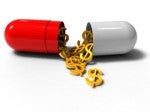Public policy officials grappling with the nation’s budget deficit should address the health care system’s inefficient use of expensive medical technology and interventions that may provide little clinical benefit to patients, two Harvard economists said in a paper they presented August 25, 2011, at the Federal Reserve Bank of Kansas City Economic Policy Symposium in Jackson Hole, Wyoming.
 Misallocation of resources to medical care of questionable value is a prime contributor to rising U.S. health-care spending, and occurs in private health plans and Medicare alike, Katherine Baicker, professor of health economics at HSPH, and Amitabh Chandra, from Harvard’s Kennedy School of Government, told the group. Health care spending in the U.S. has increased from $330 billion (inflation-adjusted) in 1966 to about $2.5 trillion today, the authors write.
Misallocation of resources to medical care of questionable value is a prime contributor to rising U.S. health-care spending, and occurs in private health plans and Medicare alike, Katherine Baicker, professor of health economics at HSPH, and Amitabh Chandra, from Harvard’s Kennedy School of Government, told the group. Health care spending in the U.S. has increased from $330 billion (inflation-adjusted) in 1966 to about $2.5 trillion today, the authors write.
In their paper, “Aspirin, Angioplasty and Proton Beam Therapy: The Economics of Smarter Health Care Spending,” Baicker and Chandra write that some procedures, such angioplasties used to open blocked arteries, are extremely valuable for some patients but overused in others, while cheaper treatments, such as aspirin, are often underutilized.
“We wanted to focus first on getting as much bang for the buck from our health care spending as we could, and then that will be useful in thinking through whether we’re spending the right amount on health care given the costs of publicly financing it,” Baicker said in a National Public Radio interview.
Listen to a National Public Radio (NPR) interview
Learn more